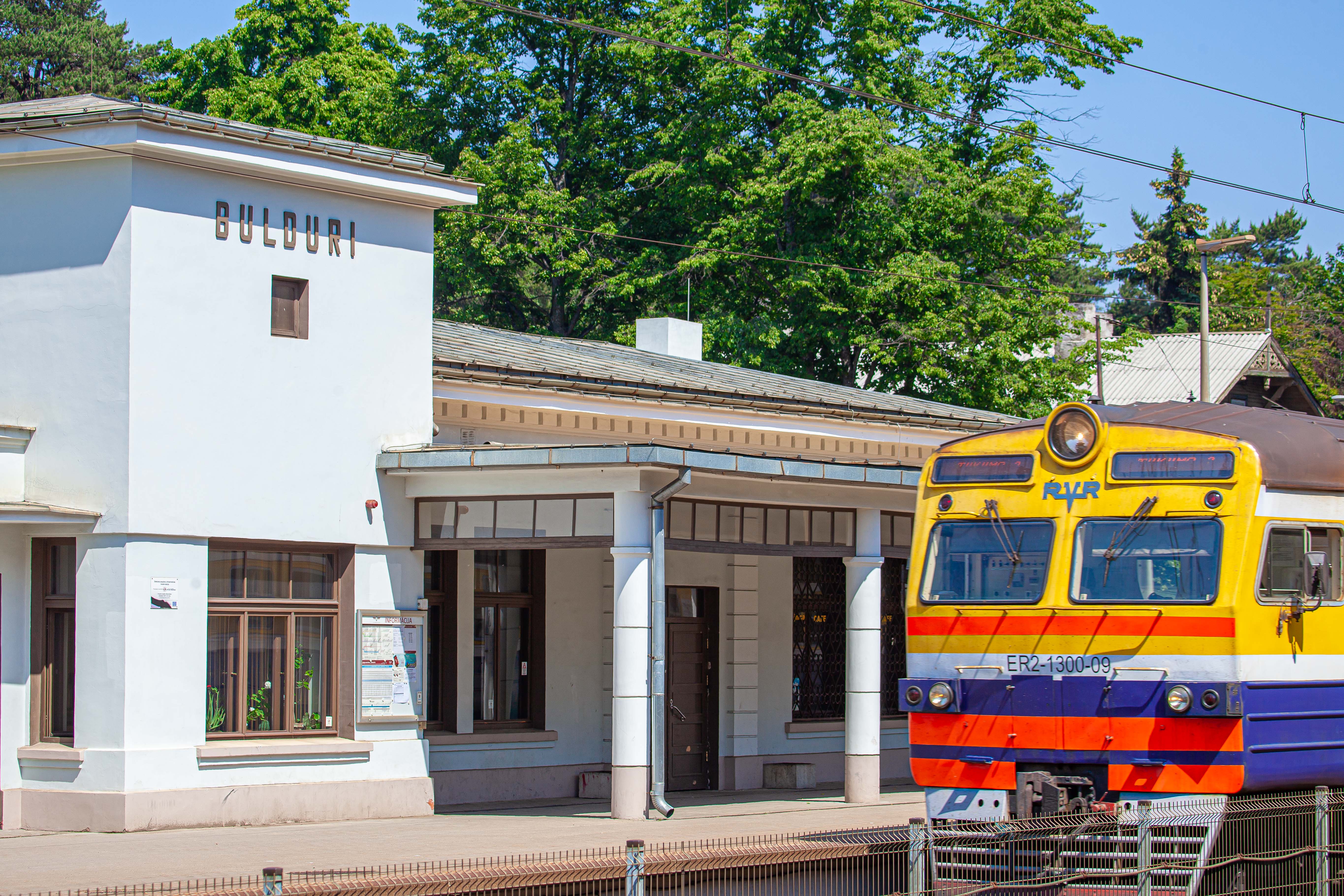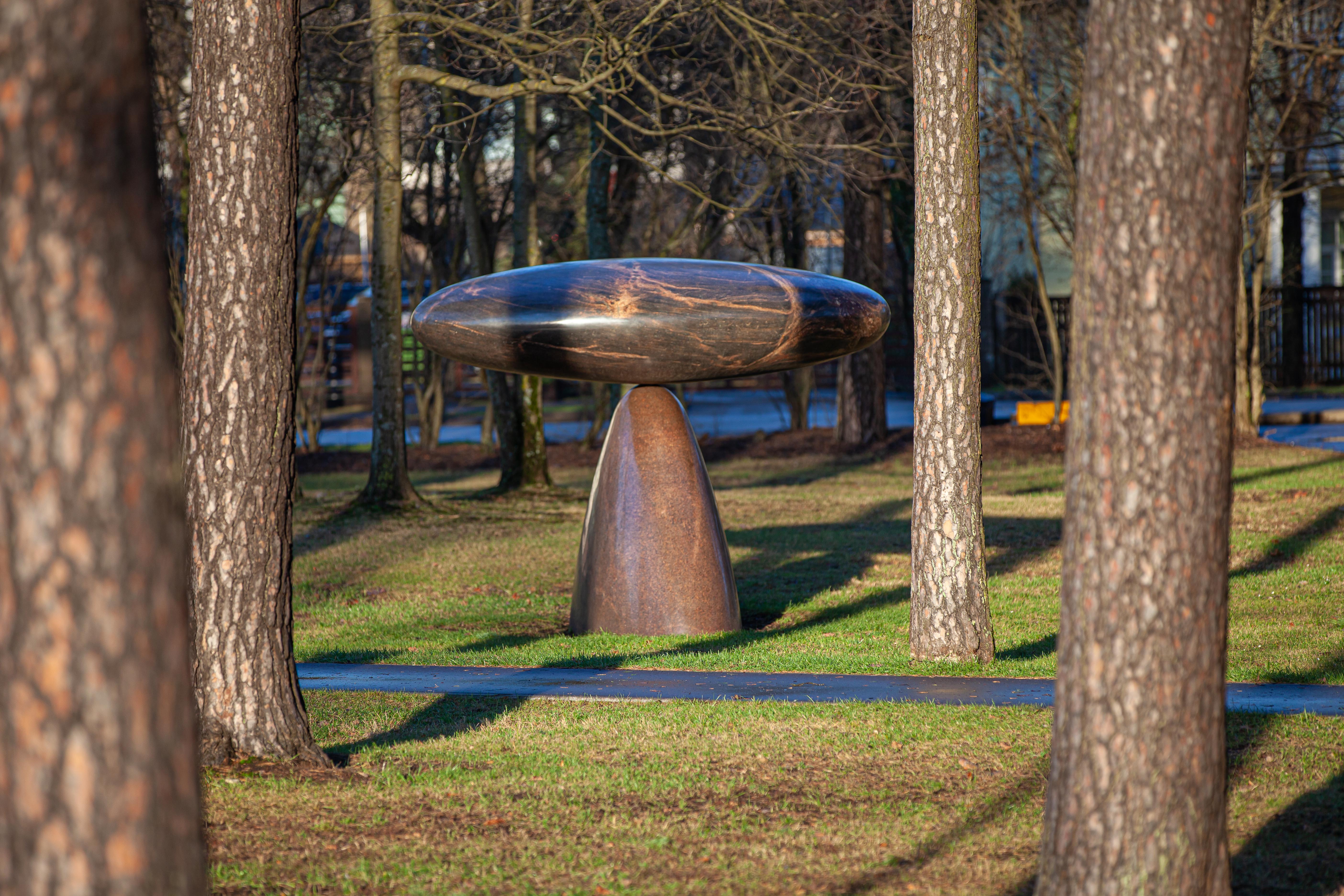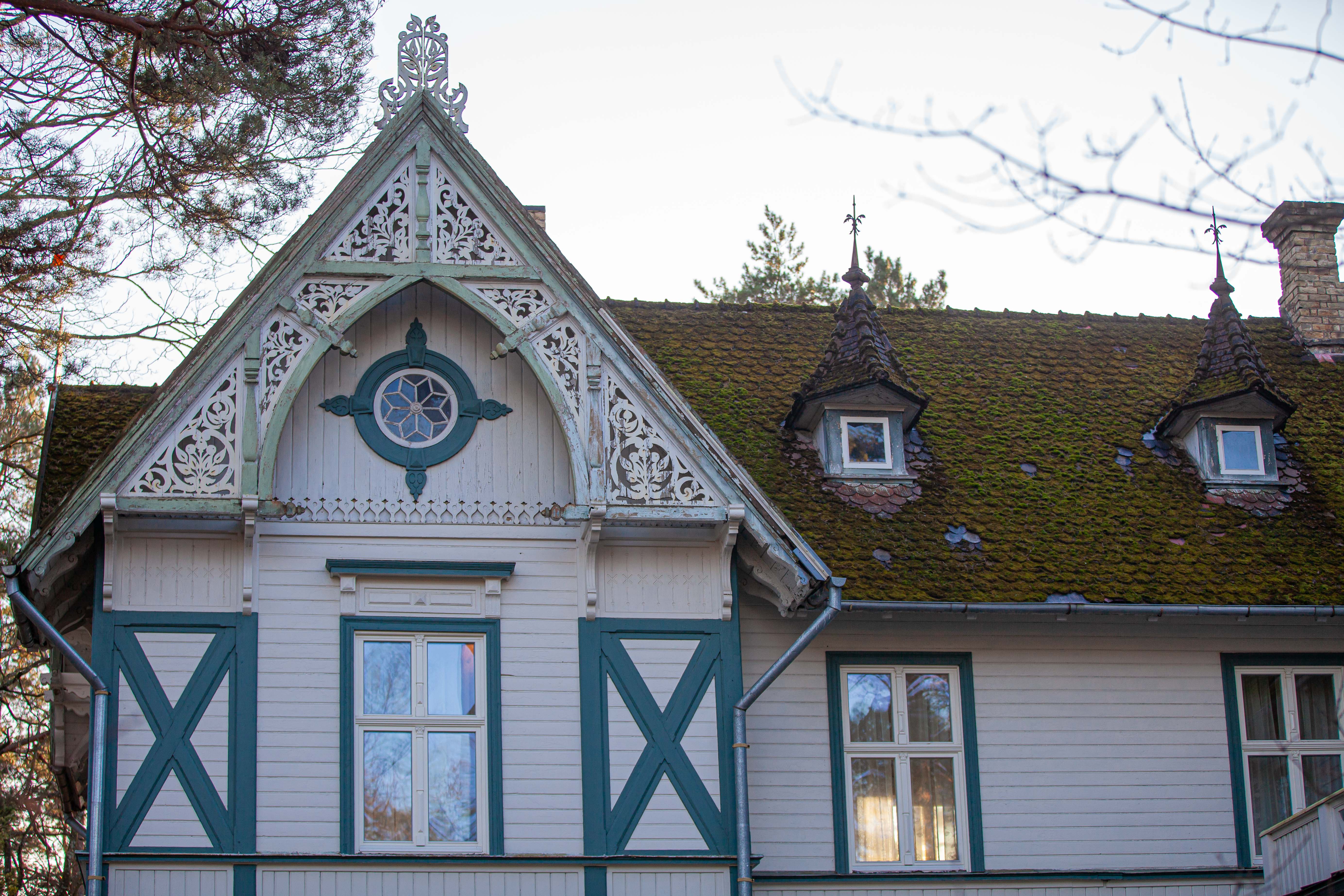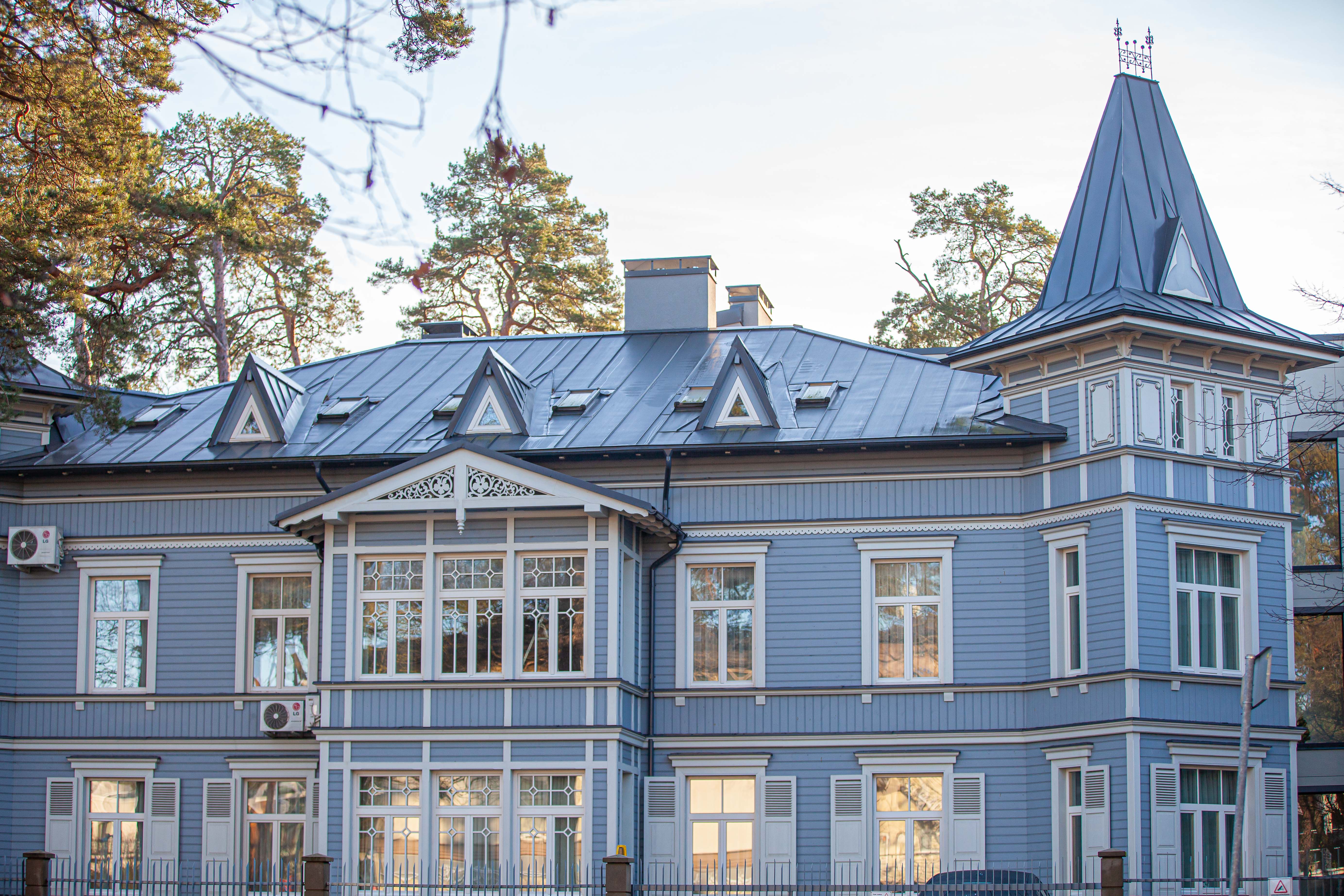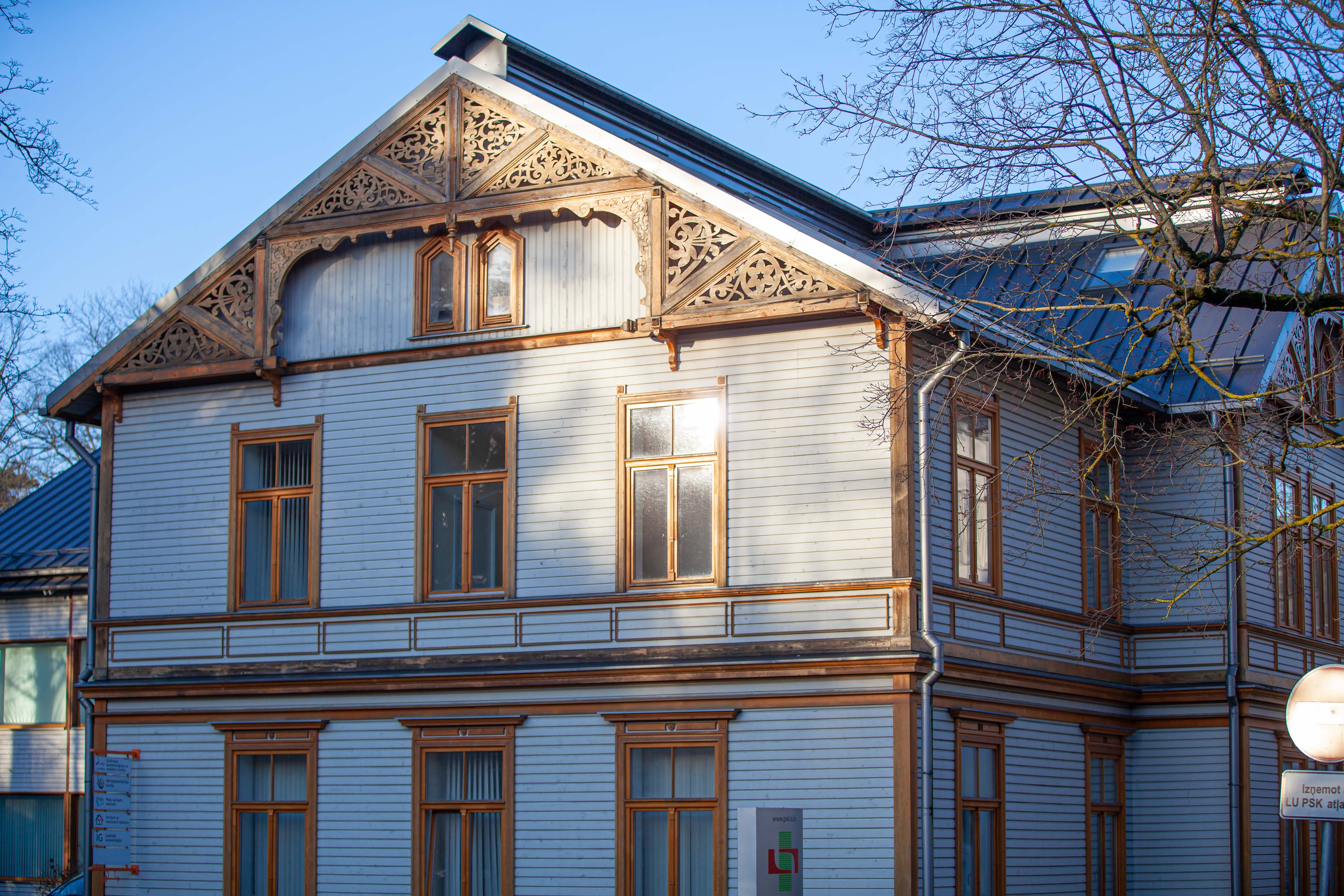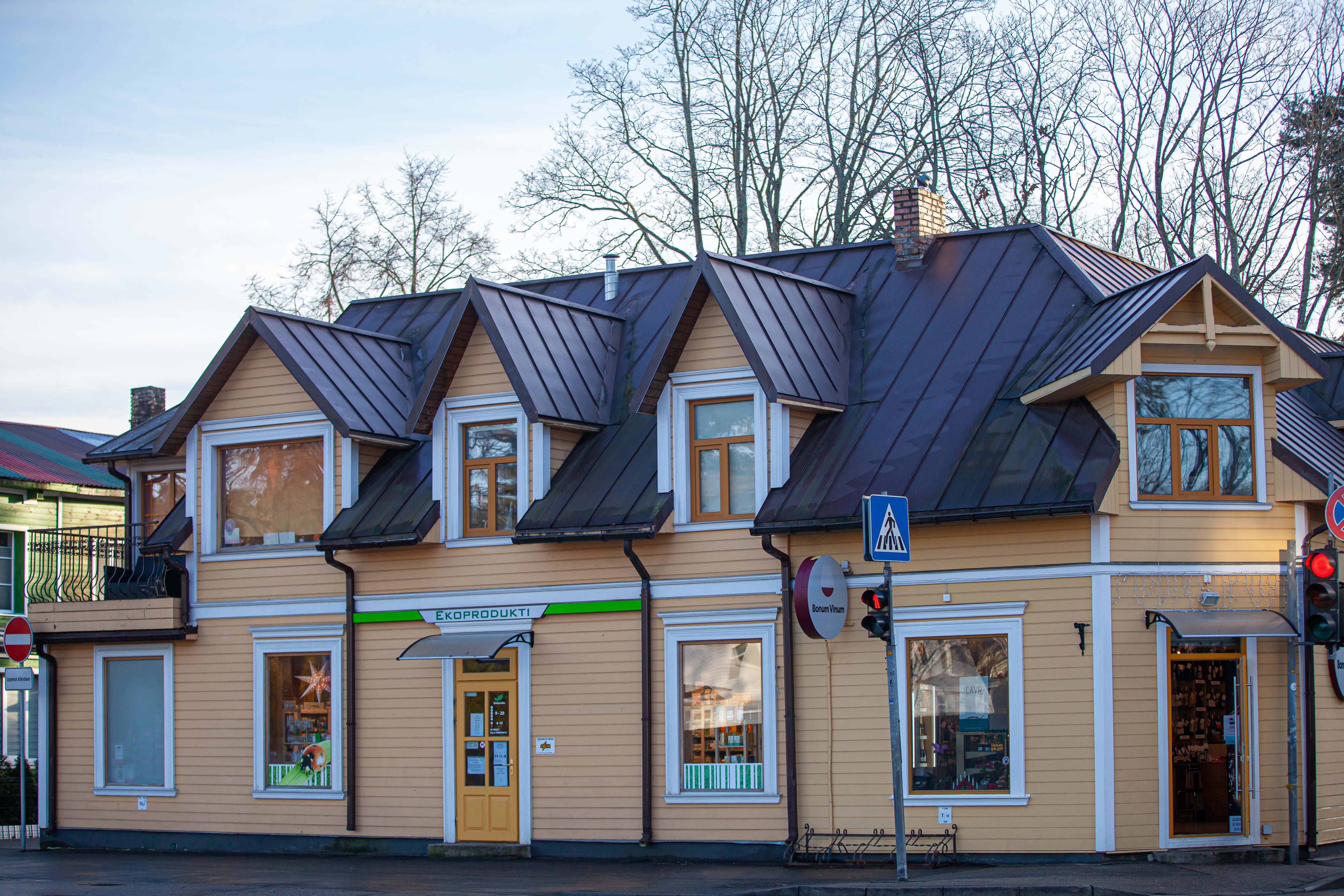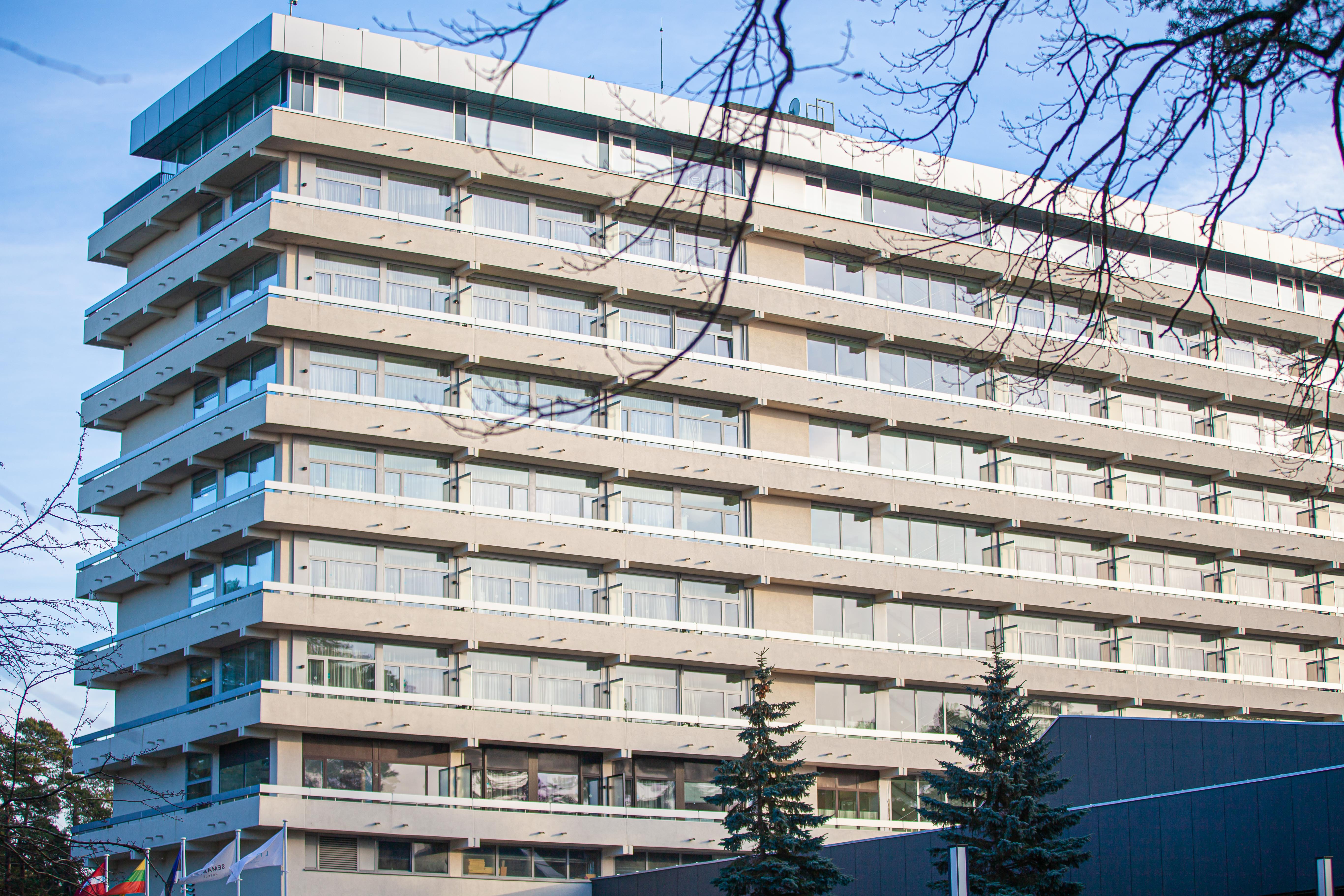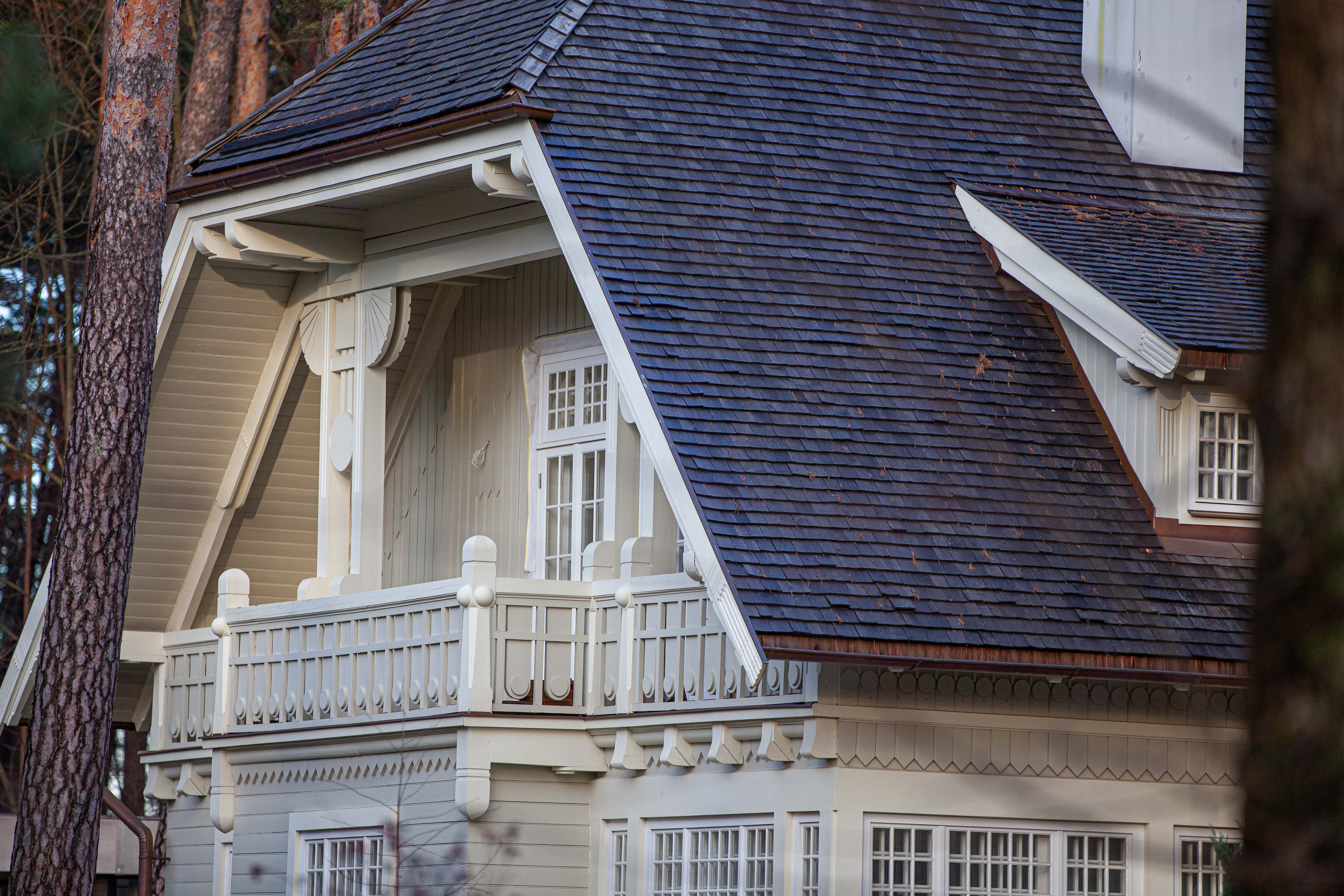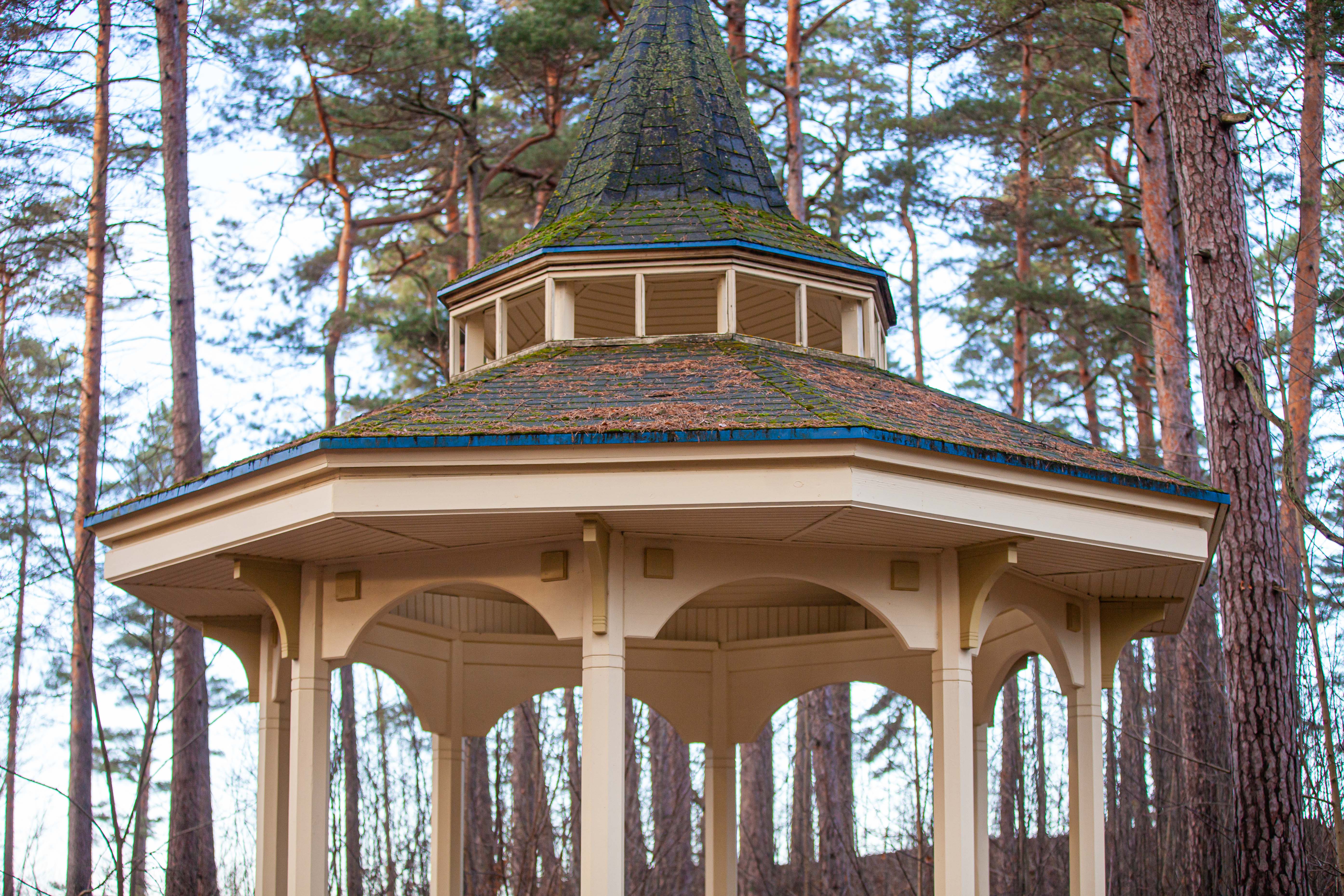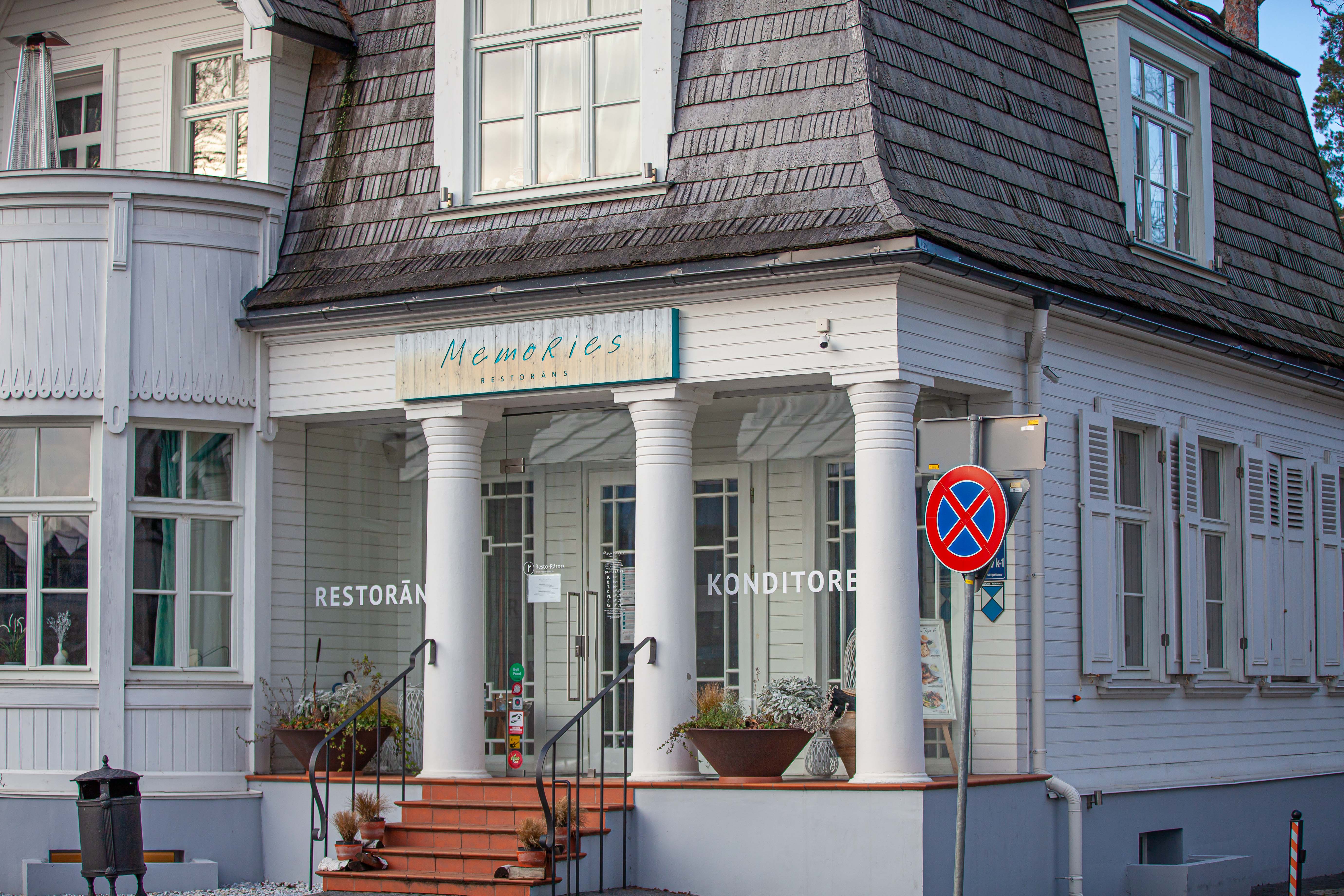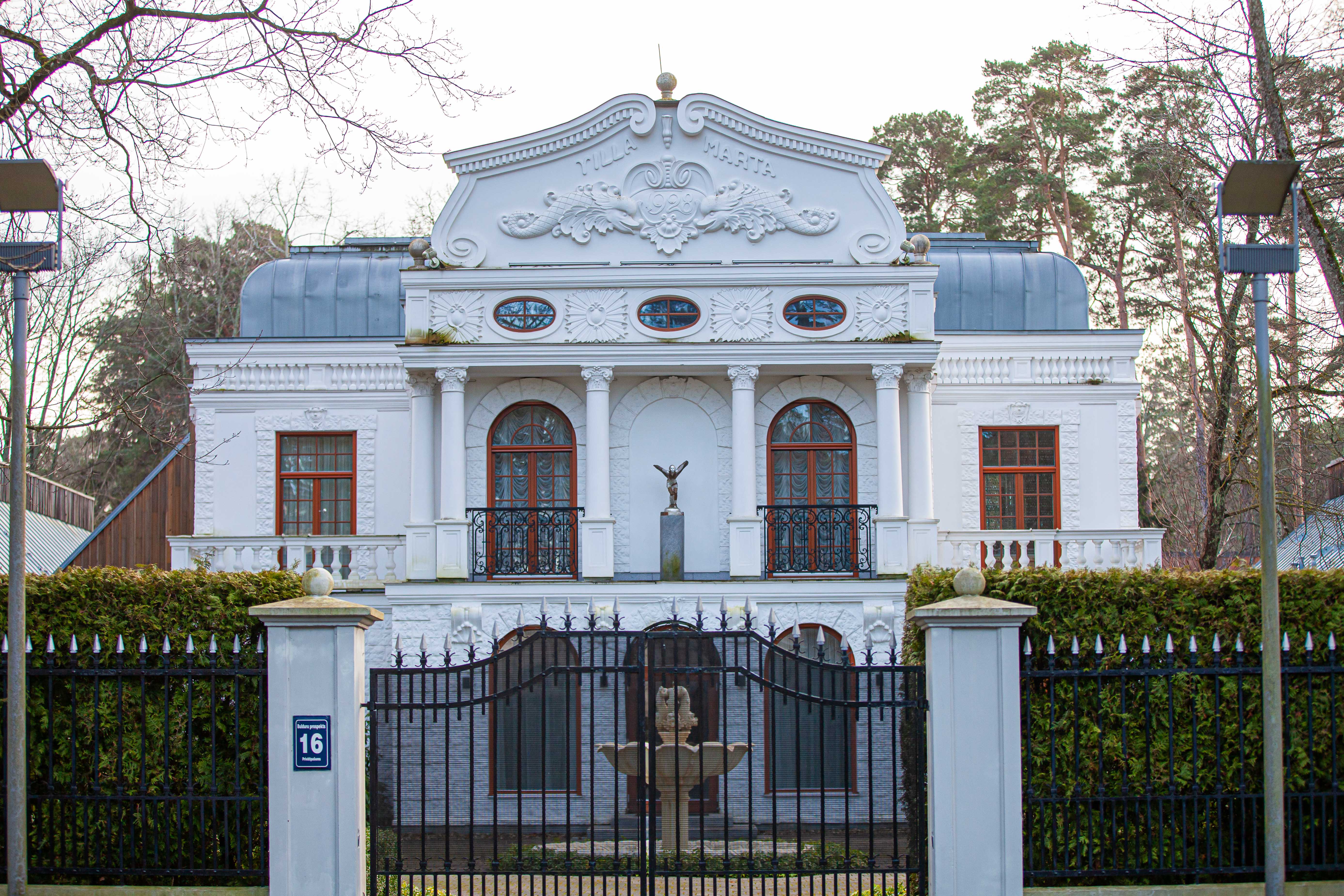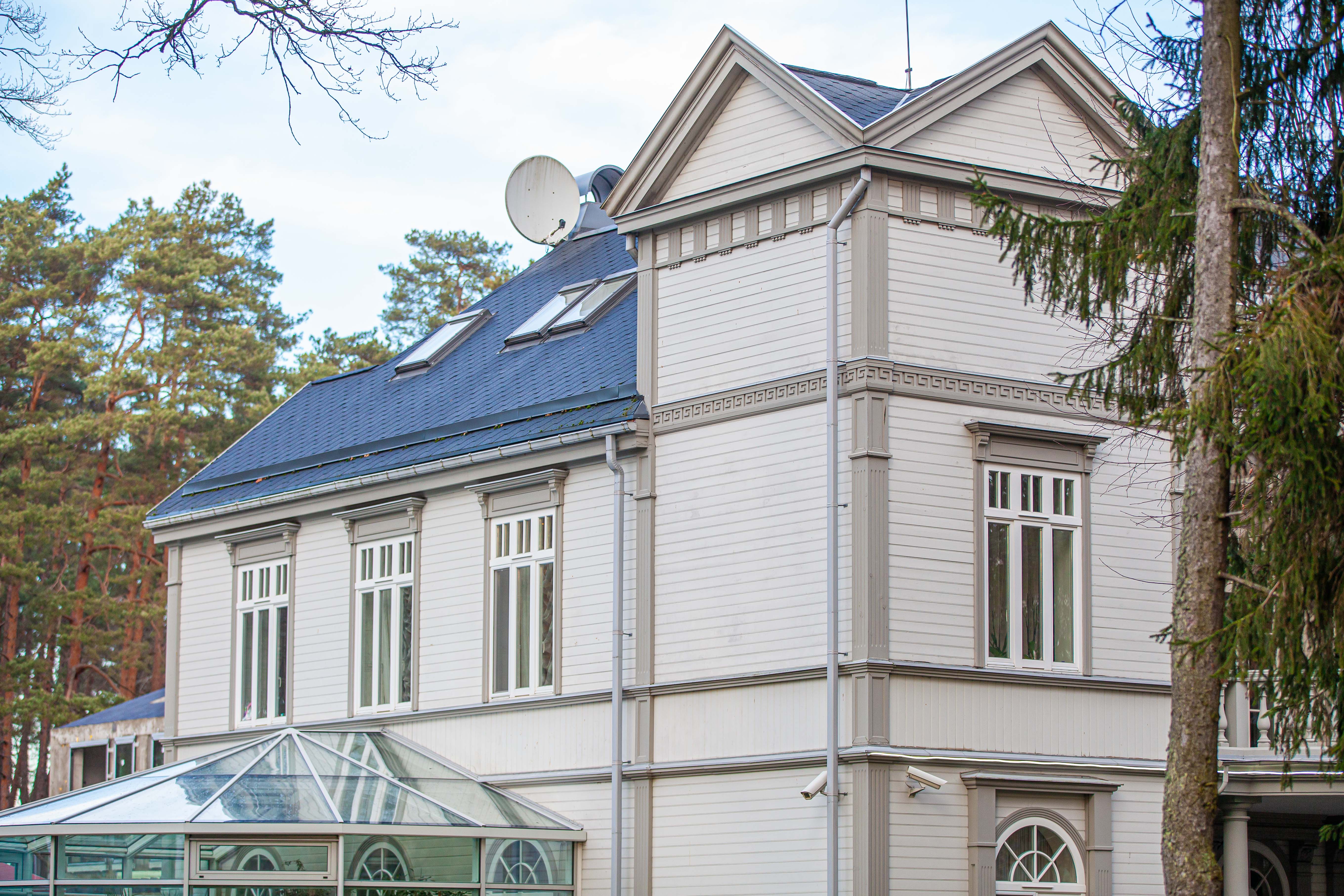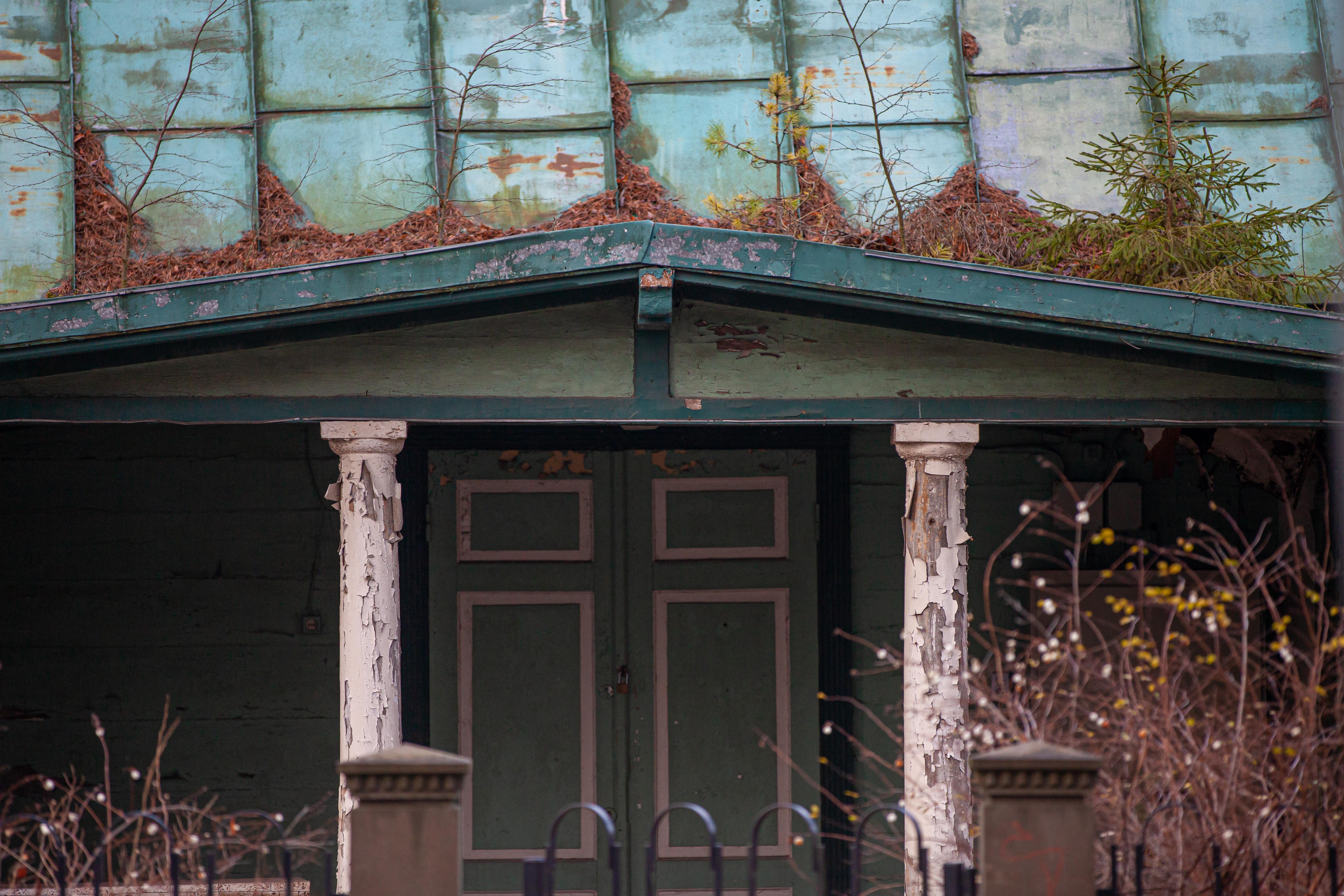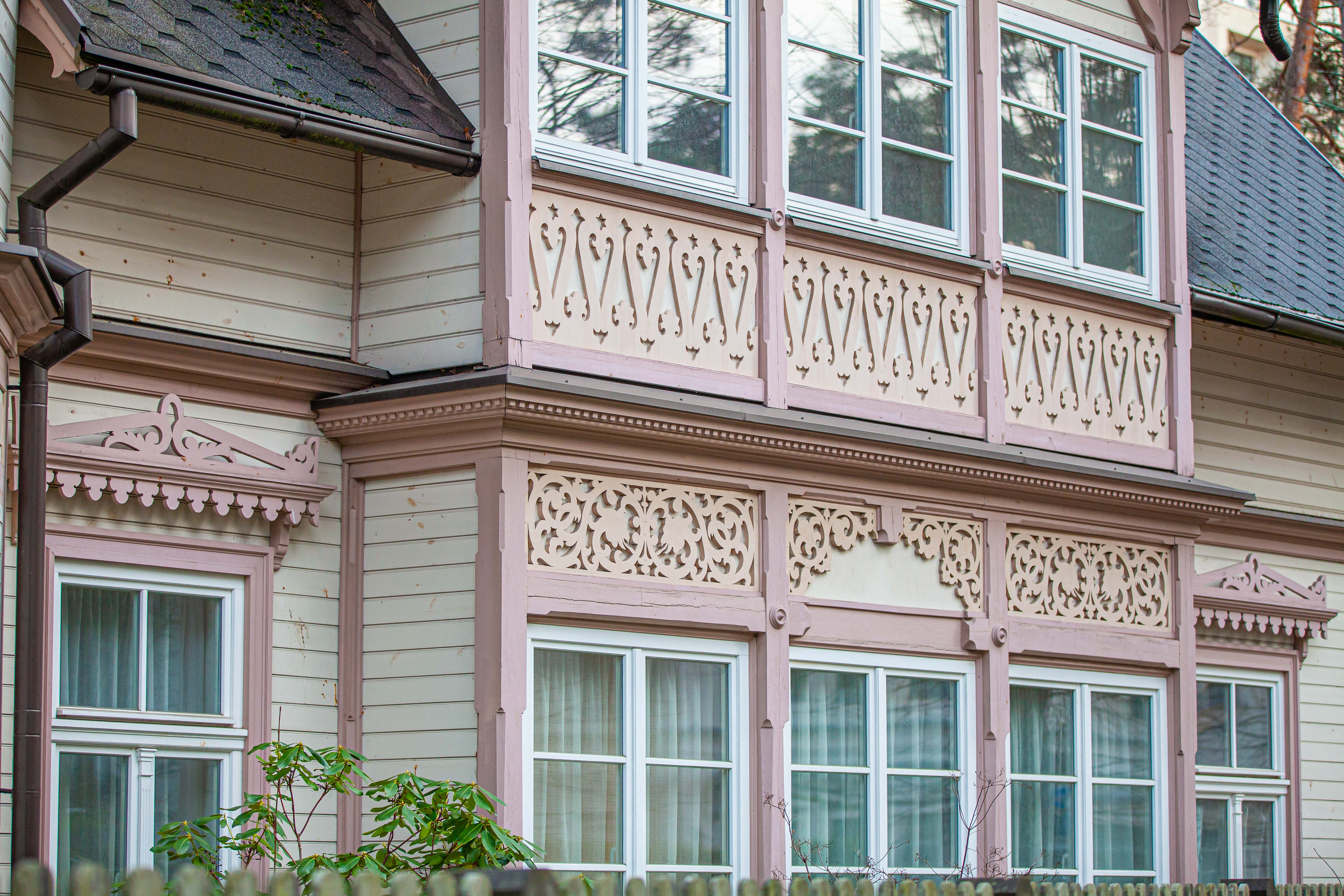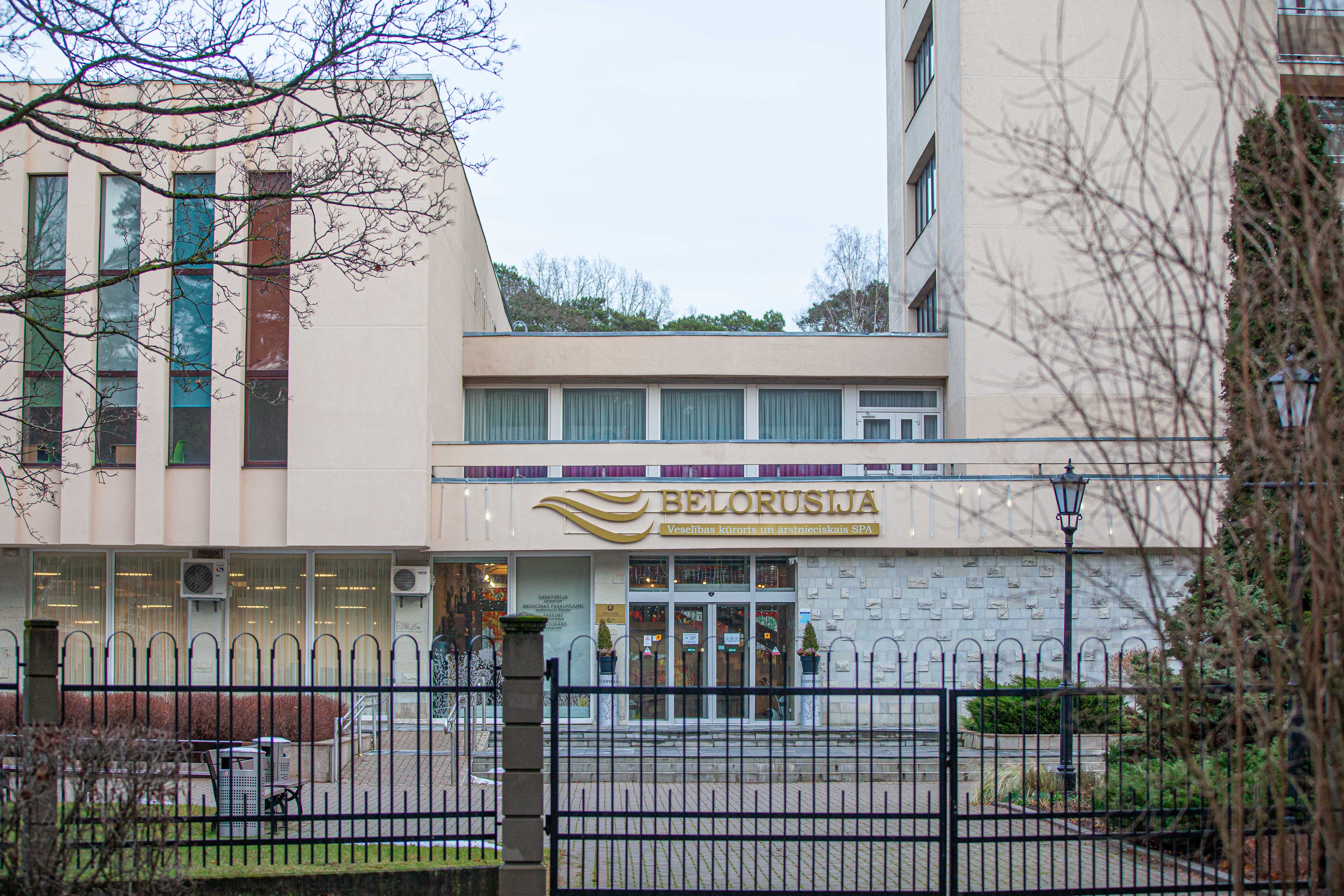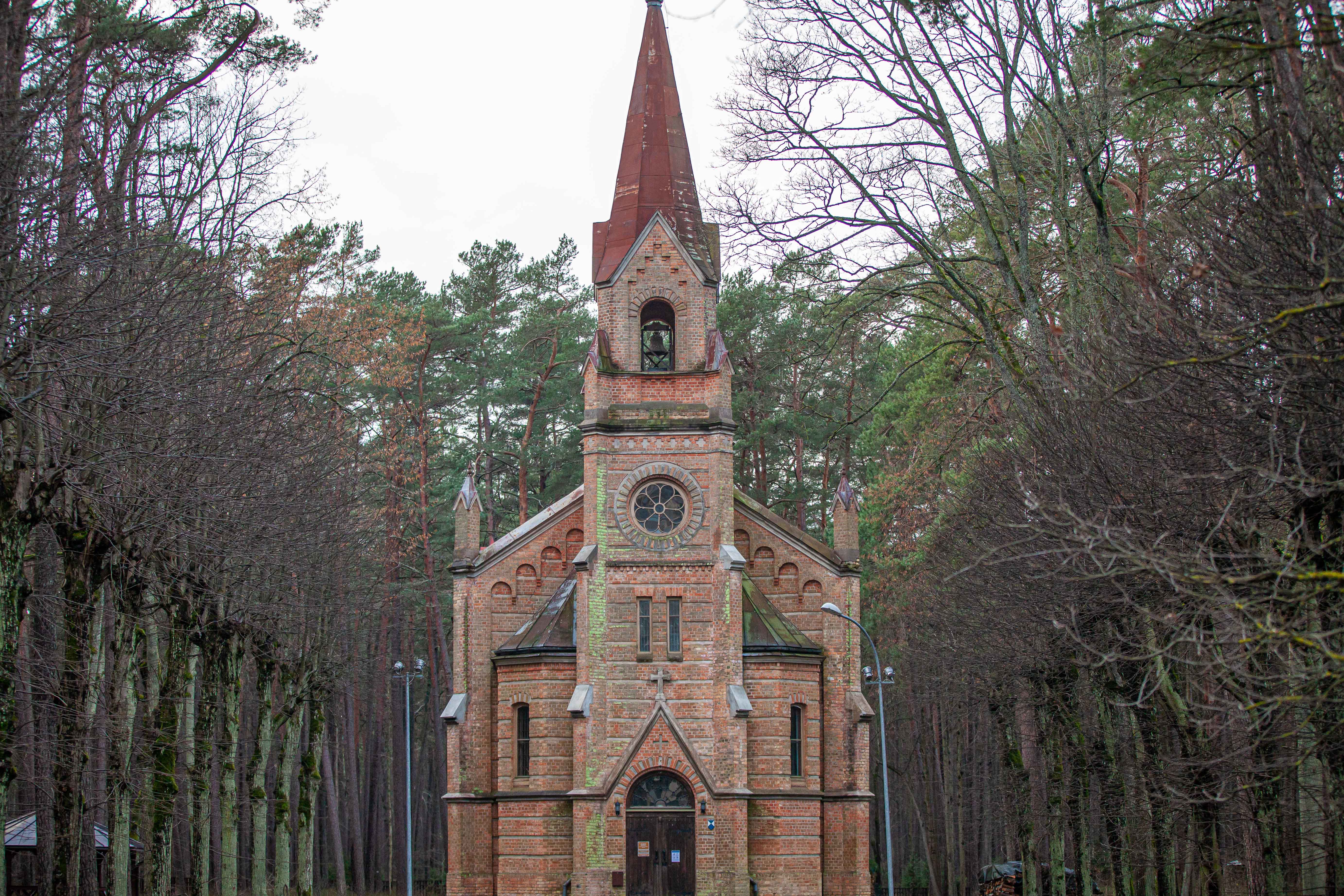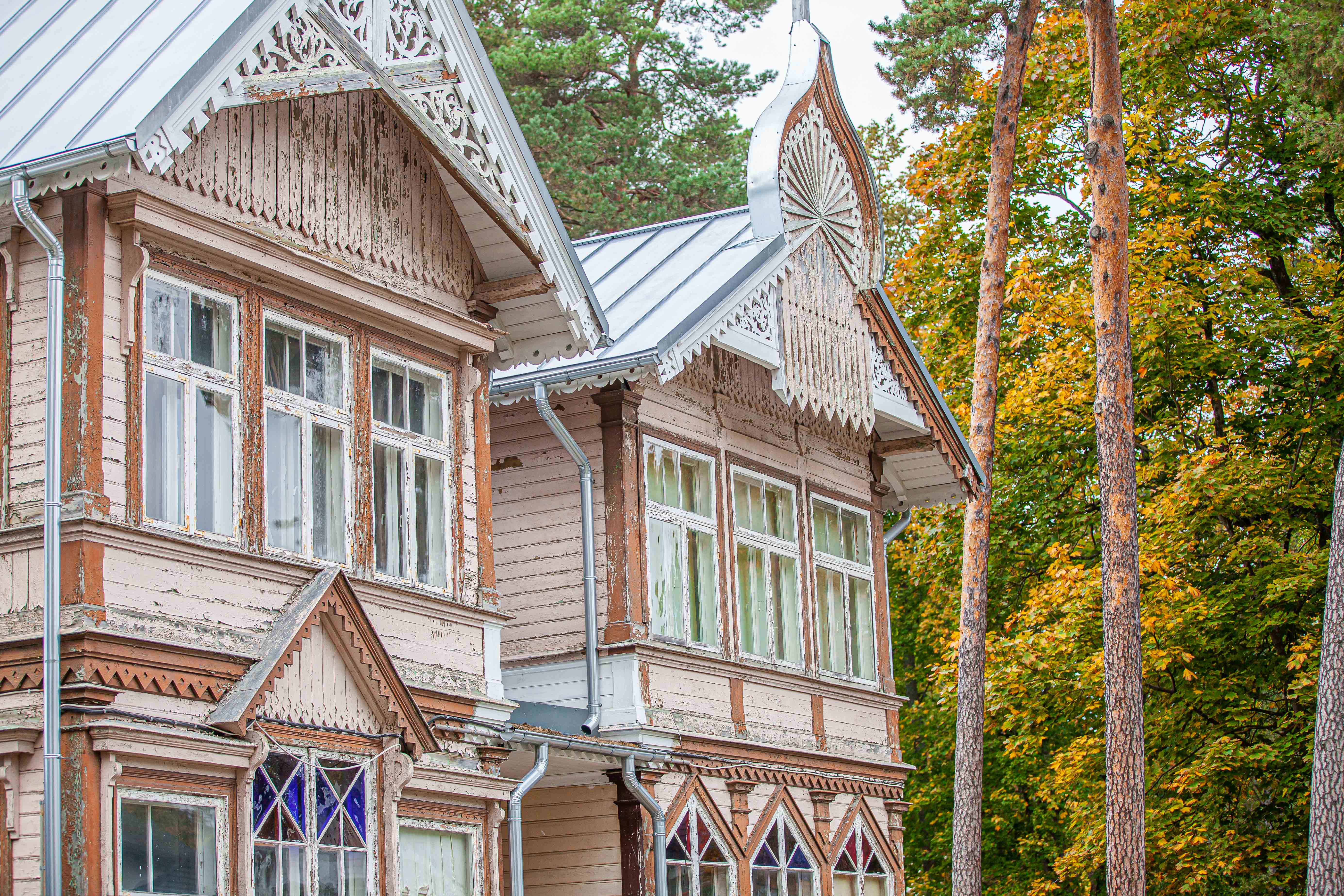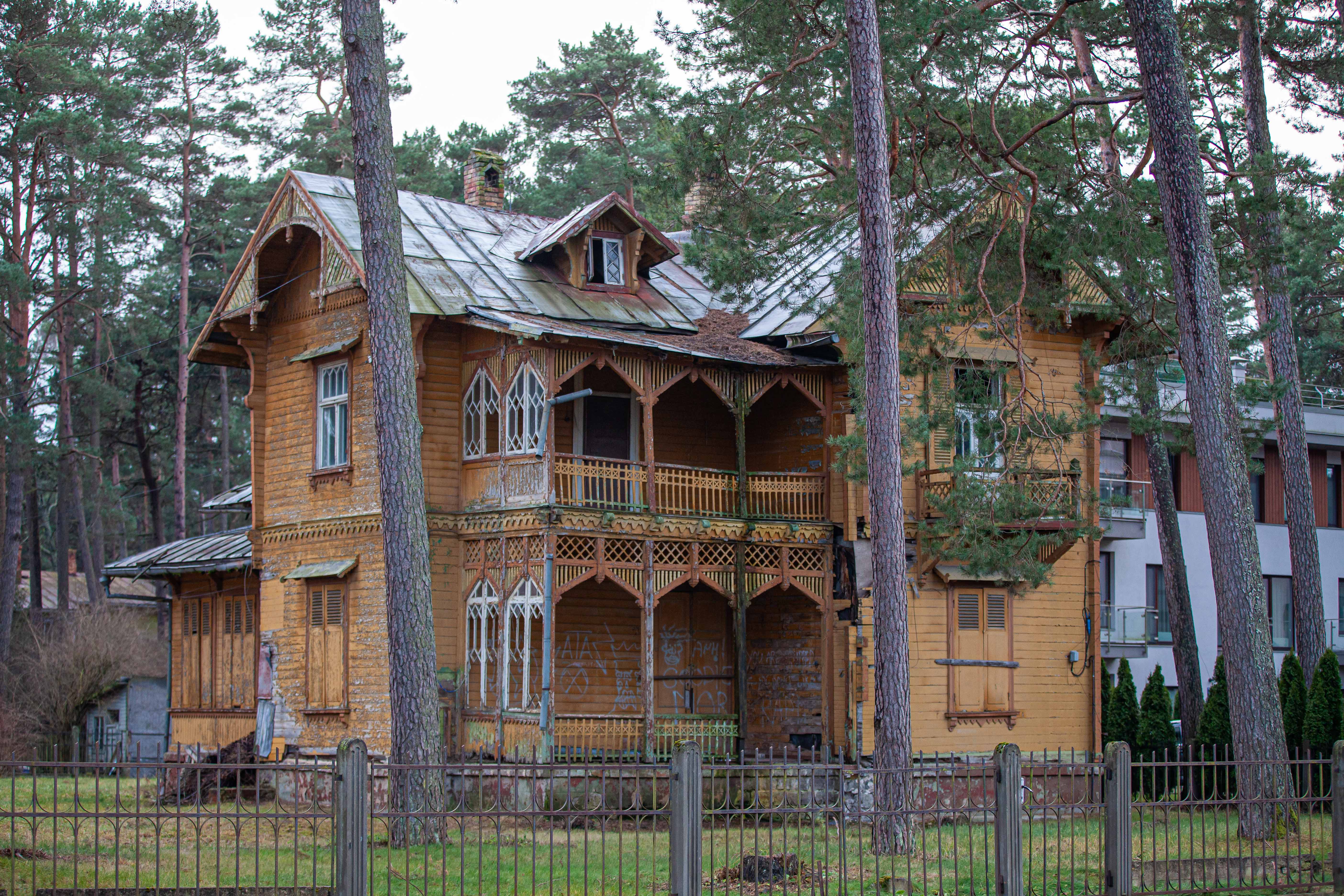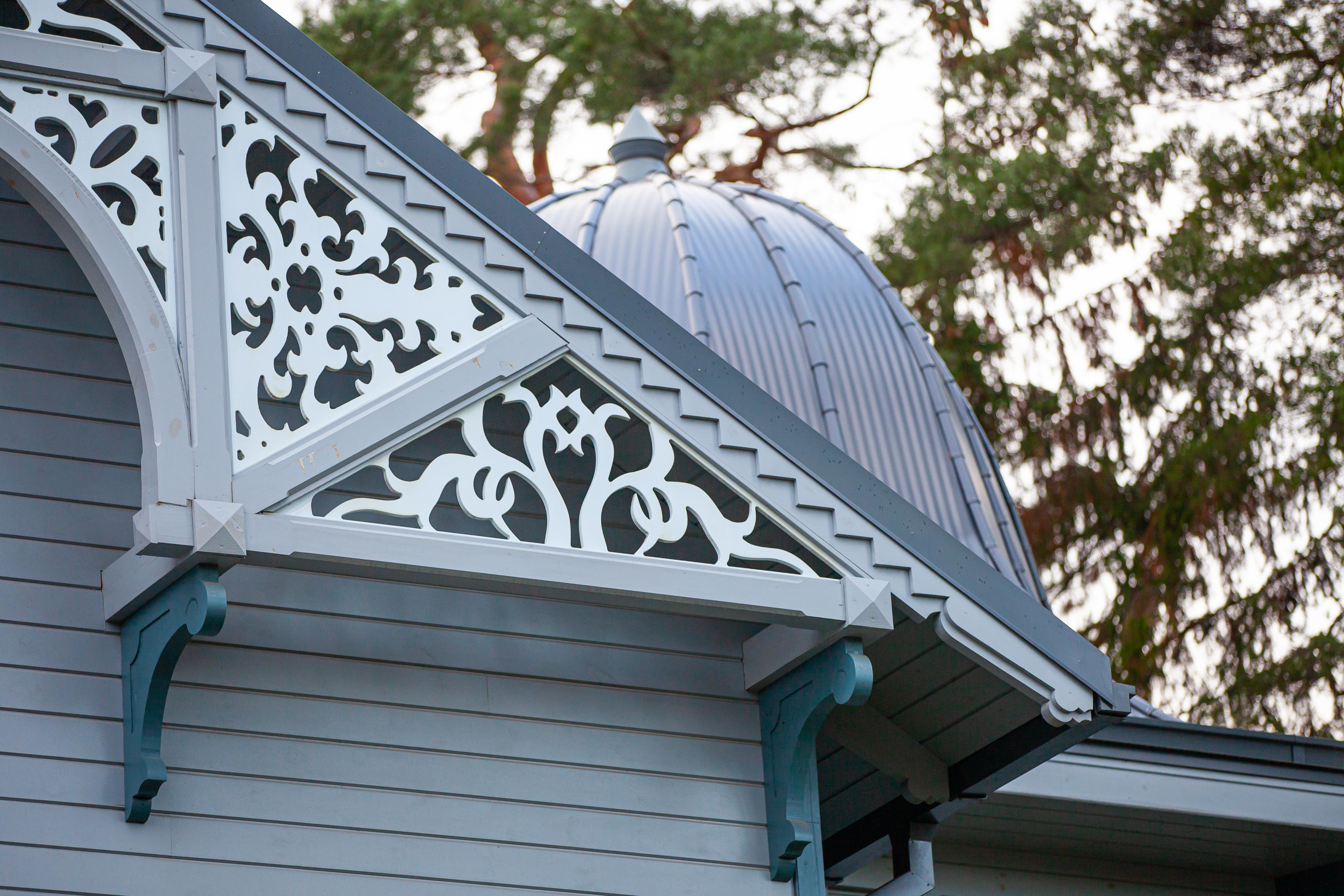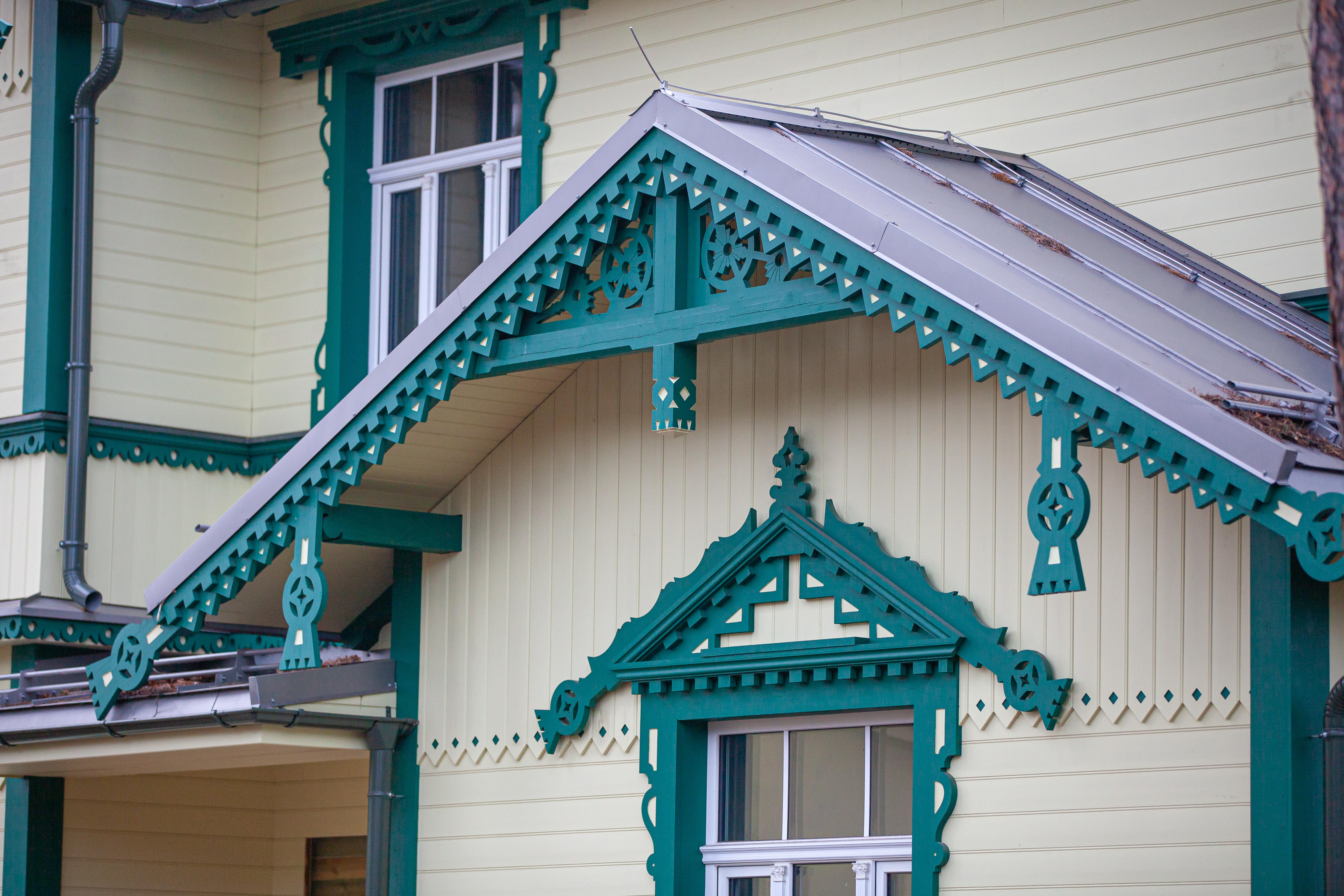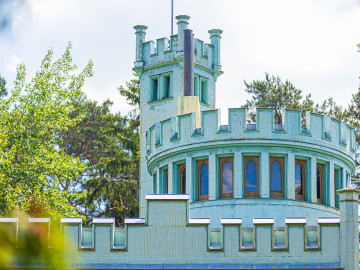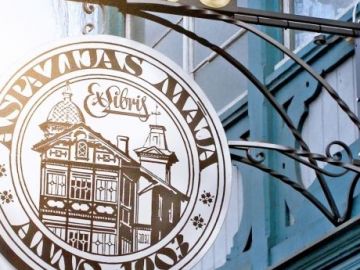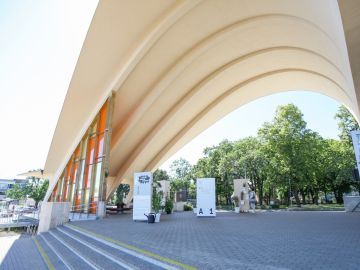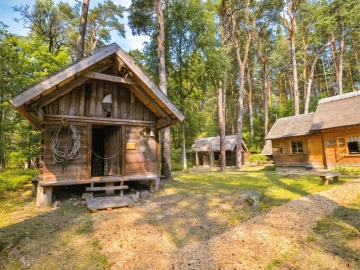Bulduri. From a German Citadel to a Centre of Social Life.
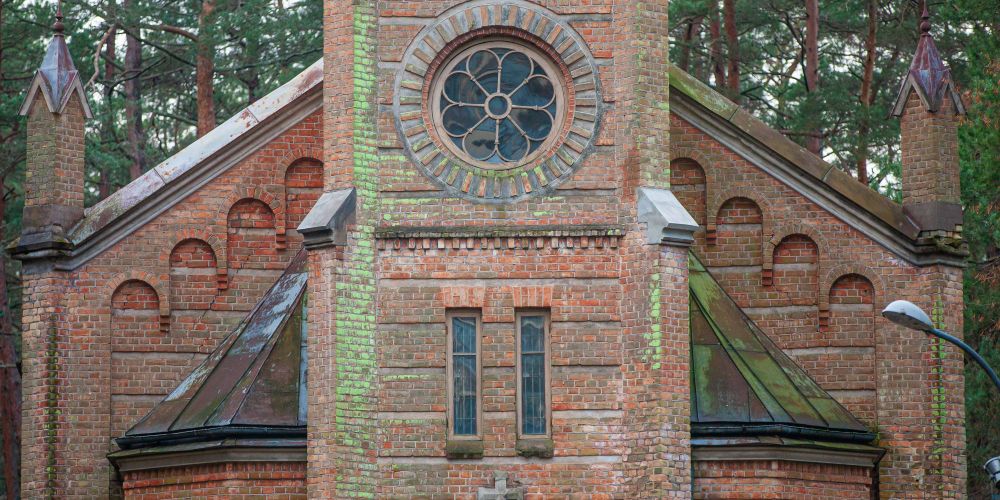
Real estate in Bulduri, especially its new part by the beach, mostly belonged to wealthy Germans from Rīga, who preferred quiet and privacy and regarded noisy entertainment with distaste, therefore it was often called the “German Fortress”. At the end of the 19th century, when construction of summer houses began on a broad scale, the most prominent German families from Rīga sought to purchase as much land as possible to ensure quiet, comfortable and pleasant summer holidays among their "own" in Bulduri. The historical name of Bulduri was Bilderliņi (German: Bilderingshof, Russian: Бильдерингсгофъ). The place name “Bilderliņi” stems from the name of Lielupe ferryman Johan von Büldring, to whom Livonian Order's Master Wolter von Plettenberg gave this neighbourhood and the river crossing site as fiefdom in 1495 and the inn to provide accommodation for travellers in 1516. In 1851 division of land along Bulduru (Lielais), Vidus and Meža avenues began. The planning was regular with streets perpendicular to each other and parcels of equal area. Side streets were numbered and named lines. This neighbourhood of summer houses acquired the name Jaunbilderiņi, but the territory along the river – Vecbilderiņi.
Real estate in Bulduri, especially Jaunbulduri, mostly belonged to wealthy Germans from Rīga, who preferred quiet and privacy and regarded noisy entertainment with distaste, therefore it was often called the “German Fortress”. At the end of the 19th century, when construction of summer houses began on a broad scale, the most prominent German families from Rīga sought to purchase as much land as possible to ensure quiet, comfortable and pleasant summer holidays among their "own" in Bulduri. A prominent role in organisation of social life played Bulduri Bathing Society, which organised designing of Marijas Park in the dune forest, street lighting at the beginning of the 20th century. In 1887 Bulduri Bathing Society created the Church Construction Commission, which built Bulduri church named the "Forest Chapel" on donations according to the project by architect Hermann Hilbing until 1889. On 2 March 1920 the government of Latvia included Bulduri into the newly formed city of Rīgas Jūrmala. In 1922 Bilderliņi was renamed Bulduri.
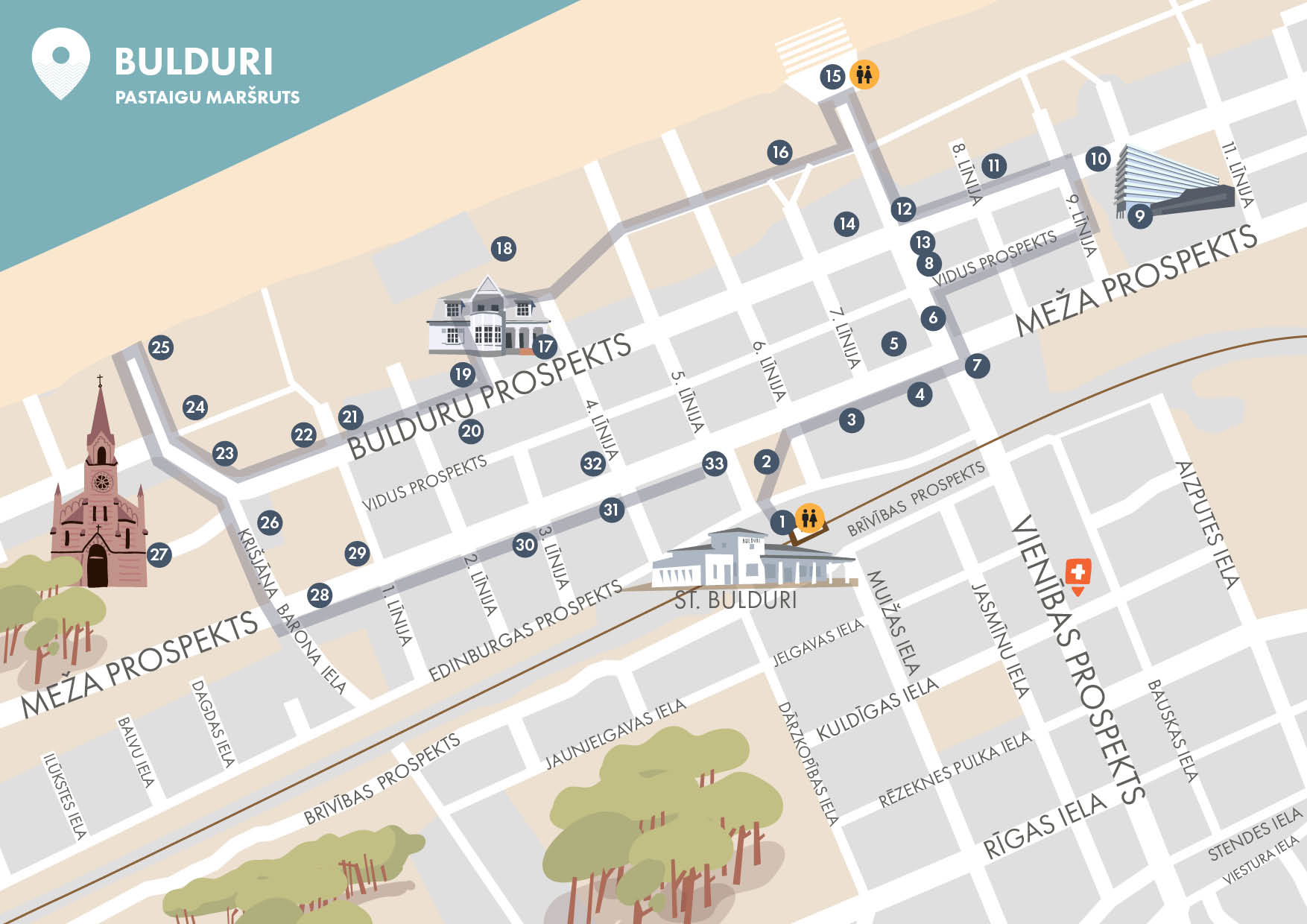
1. Railway station “Bulduri”
After the opening of the railway route Rīga–Tukums in 1877 Bulduri was the first stop in the territory of Jūrmala. Until 1904 there was only one track and one platform. In 1947, after the original wooden building of Bulduri station was destroyed in World War II, a new functionalist masonry building designed by architect Voldemārs Ozoliņš was opened. This building is a typical example of the 20th century traditions of railway station construction in Latvia. In 2015 the station building and the platform were modernised.
2. Bulduri station square
At the end of the 19th century the plot had buildings on it. They were destroyed during World War I and were not rebuilt afterwards. In 2003 granite sculpture “Debesis” ( “The Sky”) by sculptor Pauls Jaunzems was placed in the square.
3. Meža prospekts 28
A local monument of architecture. A residential house built in 1903 with asymmetrical, picturesque architectural volume with premises in the attic, a balcony and an enclosed balcony. Façades are lavishly decorated with wood curving details, gable decorations and decorations made of metal.
4. Meža prospekts 32
This plot was once occupied by hotel “Standard” built at the beginning of the 20th century. It was a two-storey wooden building with towers in the corners and a two-storey veranda. During the Soviet times – buildings of “Bulduri” health resort. The building burned down in 2005. Presently the historical building has been renovated and an extension has been built. Now a guest house operates here.
5. Vidus prospekts 36, 38 (P. Stradiņš Medical College of the University of Latvia), can be seen from Meža prospekts
There are several buildings in the quarter built at different times. The most outstanding of them from the architectural point of view is a two-storey pansion-style building with timber structures lavishly decorated with wood carvings and best seen from Meža prospekts. In 2008 reconstruction of the building was carried out and its façades were restored. The buildings house P. Stradiņš Medical College of the University of Latvia.
6. Vienības prospekts (formerly – Meža iela, Marijas prospekts, Rēzeknes prospekts)
Between the two world wars it was the main road from Rīga to Jūrmala, because there was a pontoon bridge across the Lielupe at the end of the avenue. Public institutions too were mainly clustered on Vienības prospekts, where a post office was opened in 1907, but in 1908 a marketplace was created.
7. Vienības prospekts 9, a building of shops
At the beginning of the 20th century the famous Fr.Vītols pastry shop, delicatessen and beverage shops, including a branch of the famous Joint-stock Company “Ch. Jürgenson – Otto Schwarz” wine shop, was located here, later in 1959 a specialised haberdashery and a perfume shop was opened here. Presently the first floor of the building is also occupied by shops. Owners of “Ch. Jürgenson – Otto Schwarz” brand were Kristiāns and Dora Jirgensons. In 1887, when they were approximately 20 years old, they came to Rīga from the countryside and started their business – became lessees of Rīga railway station snack bar, they grew their business and were owners of an impressive business empire in the end, including the famous restaurant "Otto Schwarz" in Rīga and "Cafe' de l'Opera". Later Kristiāns and Dora Jirgensons opened also a liqueur factory, winery and wine shops. Turnover of the liqueur factory grew from year to year and in 1930s it became the leading enterprise in the industry. In 1928 after the death of Kristiāns Jirgensons his wife expanded the empire of “Ch. Jürgenson–Otto Schwarz” brand. In 1936 Dora Jirgensone was awarded the Order of the Three Stars.
8. Vidus prospekts 51
In the past a bakery operated here, but from 1949 to 1963 the small building housed cinema “Banga”. The building was damaged by fire and was demolished in the 1990s. Presently there is a new building.
9. Bulduru prospekts 64/68, hotel “Lielupe by SemaraH”
A nine-storey building built in 1982 to house “Lielupe” holiday hotel for 600 guests with sports grounds and playgrounds. The canteen offered a dietary menu, special menu for children, medical facilities provided dental services, physiotherapy, massages, quartz lamps, a beauty salon and a pool with sauna, bath. Theatrical productions, gaming machines, reading of fairy tales in the evenings were among entertainments offered to children, adults could attend parties, musical evening, aerobics classes, use the library and tennis courts, play chess. Presently the building houses hotel “Lielupe by SemaraH”. After a serious reconstruction, the hotel offers several modern conference halls, a health and spa centre, a pool, a restaurant and comfortable rooms.
10. Bulduru prospekts
Before 1935 Bulduru prospekts was called Lielais prospekts. Side streets perpendicular to the avenue are called lines. Presently lines remain only in Bulduri and Lielupe, however, earlier streets elsewhere in Jūrmala were also called lines. The grid-patterned streets of Bulduri neighbourhood are a part of a national monument of urban construction.
11. Bulduru prospekts 41
A national monument of architecture. A wooden Art Nouveau building with a particularly expressive glass veranda and an enclosed balcony in the loft built at the beginning of the 20th century. The building is recessed from the street; there was once a garden in front of it. It was once a guest house, now it is a residential house.
12. Bulduru prospekts 35
In the Soviet times it was a bookstore, now – a café.
13. Bulduru prospekts 52
Until 1990s restaurant “Jūrmala”, a café and delicatessen shop operated here. In our days, a new residential complex with a restaurant on the first floor has been built here.
14. Bulduru prospekts 33
This reconstructed historical building is an architectural monument. The original building was erected at the beginning of the 20th century as Bulduri hotel – casino. There had been a hotel here since the end of the 19th century, but it had burned down several times. After the fire of 1911 a new, larger hotel building was erected and after buying additional land a concert garden was created. In 1920 the Bulduri Conference or Intergovernmental Conference of the Baltic States important for the newly established independent Latvian state, in which delegations of Latvian, Estonian, Lithuanian, Polish and Finnish government participated, was hosted in the hotel – casino. A plaque has been placed at the building to commemorate the event. In 1922 the first gaming club – casino in Latvia was opened here. Only foreigners and citizens of Latvia with annual income of at least 12 thousand Latvian lats could play in casino. A couple years later the casino was closed because of political disagreements and public pressure regardless of the fact that income of the city of Rīgas Jūrmala from its operation was impressive.
In the Soviet times the building came under the management of “Bulduri” sanatorium, one of the largest in Jūrmala in 1960s recognised as the best sanatorium in Latvia. In the buildings of the sanatorium that could accommodate 500 patients mostly cardiovascular diseases were treated. Scientific and research laboratory operated in one of the sanatorium's buildings and researched impact of seaside climate and air ionisation on human health. In 2006 after several fires since 1992 a small part of the historical building was restored, and several new buildings were erected on the plot. Presently the complex of buildings houses cafés, offices and apartments.
In 2018 “Beit Israel” synagogue was opened on the first floor of the building. Jews appeared in Bulduri at the end of the 19th century. At that time only Jews of a certain social status were allowed to settle here. Because of this segregation there were few Jews, therefore families usually gathered and organised prayers at somebody's home. In 1906 due to activity of shoemaker Mordehajs Ļežiks, who had the right to settle in Bilderingshof, a synagogue was built on present-day Saldus street. Proclamation of an independent Republic of Latvia, cancellation of the prohibition for Jews to settle in specific locations contributed to an increase of their number in Bulduri. In 1930s so many people came to the synagogue that it could not accommodate all of them, therefore a new larger synagogue was built in 1938. However, the fate of Bulduri synagogue was tragic – in 1941, when genocide against Jewish people started, the building was burned down.
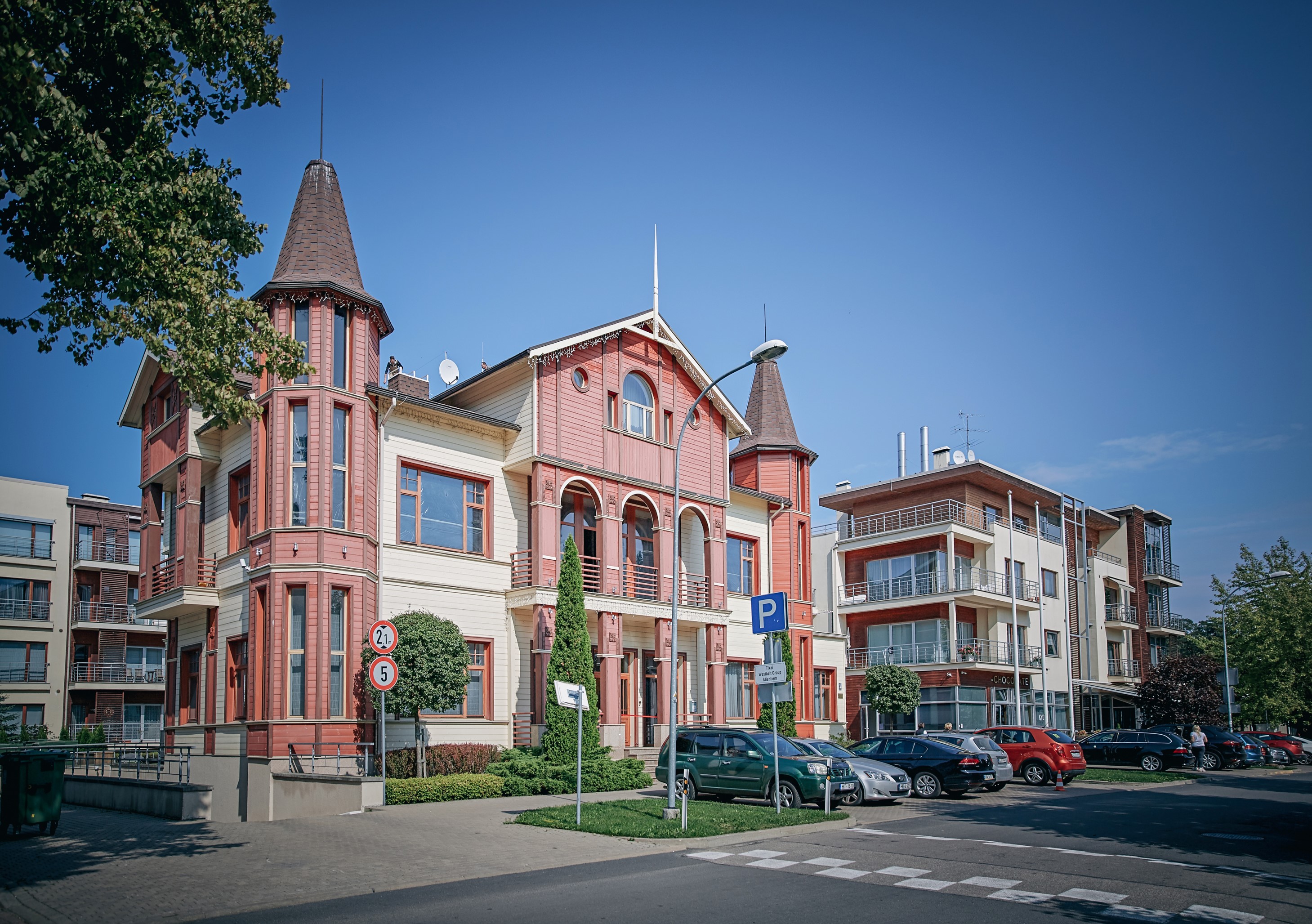
15. Vienības prospekts – exit to the beach
At the beginning of the 20th century a bathing establishment was set up here. Bathing establishments with warm sea water were popular because visitors could enjoy bathing in sea water all year round there. In 1965 by the exit to the sea the legendary restaurant “Jūras pērle” (the Pearl of the Sea) was built in the dunes by the sea, which after several fires was completely demolished in 2001.
The architecture of the restaurant “Jūras pērle” was unusual and admirable – the impressive view of the sea from the roof terrace and from rooms in the overhang of the building gave one the illusion of being on the deck of a cruise ship. The building was designed by Josifs Goldenbergs (1907-1984), whose buildings are notable examples of Soviet modernism in Latvia. “Jūras pērle” was an entire complex that could accommodate 540 guests: a winter café on the first floor, a restaurant on the second floor and a café – solarium on the third-floor roof terrace. The restaurant was known for its professional cabarets and rich cocktail menu, the shimmering glass floor, provocative performances, rich musical programme, and skilled waiters. The best chefs of Latvia participated in the preparation of the menu of "Jūras pērle". Waiters were carefully trained – theatre and ballet choreographers taught them to walk, artistry and manners. At that time professional musicians played at restaurants and people came to listen to pop music. It was hard to get to the evening show, public figures, foreigners, and high-level delegations visiting the city of Jūrmala attended the restaurant often.
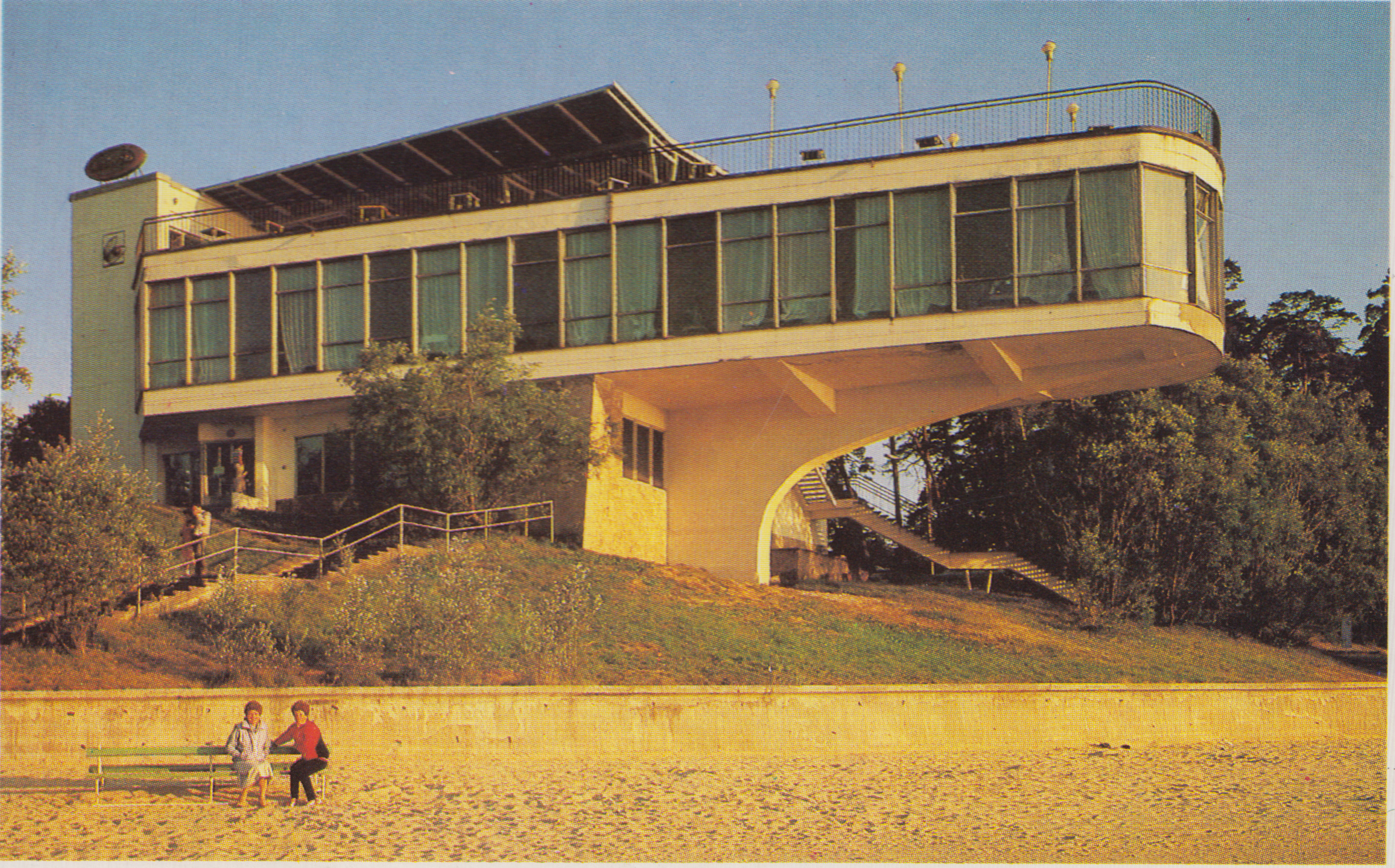
16. 7.līnija, former “Marijas parks” in the dunes
At the end of the 19th century two urban forests were laid out on the lands of Bulduri manor – Marijas (in the dunes in the neighbourhood of present Dzintari and Bulduri) and Edinburgas (between present day Dzintaru and Edinburgas avenues). Nowadays a square has been laid out, a bike route and a walking route have been restored in the territory of the historical Marijas Park (after 1920 – Bulduru Park) between the 2nd and the 5th line, a historical arbour – rotonda can be seen in the dunes on the 7.līnija.
17. Bulduru prospekts 17
A local monument of architecture. The building was constructed at the beginning of the 20th century to serve as a residential house and a pharmacy. In 1920s – 1930s the pharmacy was owned by Dāvids Garbers. 100 years ago, a pharmacy, where medicines and remedies were made, operated on the first floor, the pharmacist himself lived on the second floor. In Soviet times “Aptieka Nr.41” was located here. The building of the pharmacy has been meticulously restored and presently it houses a restaurant. Nowadays behind the restaurant building in the direction of the sea a modern residential district “Legend” has been built recently.
18. 3.līnija, former “Marijas parks” in the dunes
On the beach, at the end of the 3.līnija a climatotherapy pavilion operated in Soviet times, where holidaymakers could make use of treatment rooms, sea water showers, a massage cabinet, and outdoor sunbathing areas. Now a large mansion has been built here.
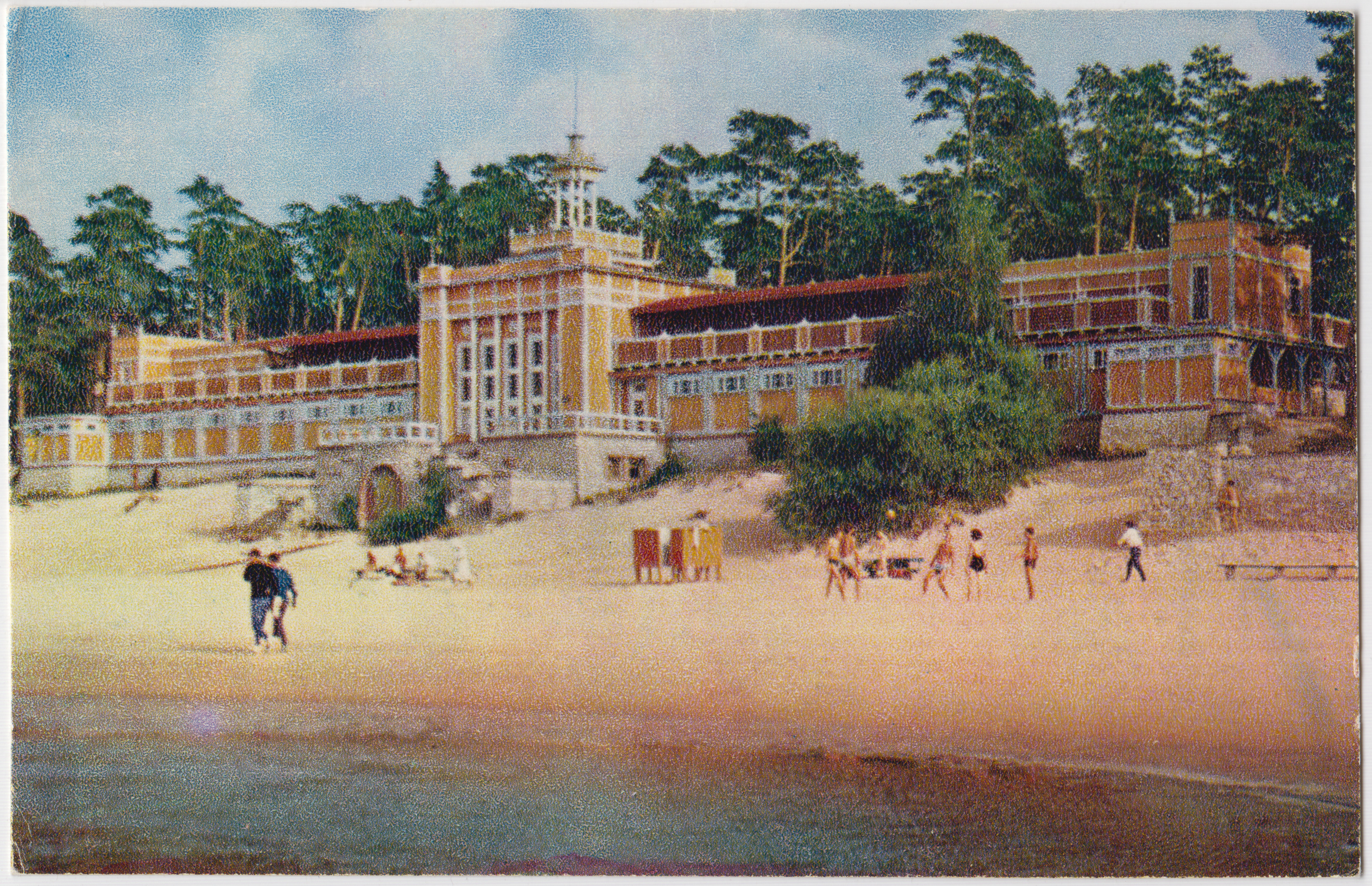
19. Bulduru prospekts 13
A two-storey wooden building with open composition of the volumes of the building characteristic of summer pansions. A tower-like construction, verandas, a recessed balcony, risalit alternate between themselves asymmetrically, supplementing each other. Wood carved details reflect traditional examples of historism. During the Soviet times it housed “Rīga” holiday hotel.
20. Bulduru prospekts 16, “Villa Marta”
In the Soviet times the sanitary and epidemiological station, which has been rebuilt several times, occupied the building. Presently the building has been turned into a splendid mansion “Villa Marta”. Alongside the villa several modern buildings have been erected based on the design by architect Meinhards fon Gerkāns. These buildings house a private guest house, a concert hall, and a tennis court. Various materials have been used for finishing of “Villa Marta” buildings – matt cherrywood, Swiss Pear, Siberian Larch. An architectural monument from the beginning of the 20th century – a two-storey block work building with unusually expressive composition. Semi-circles of apertures, pilasters, cornices, and decorations give an impression of Neo-Renaissance architecture. In addition to varied wood carvings the façades are decorated with cast iron art details.
21. Bulduru prospekts 7
An architectural monument of local importance from 1920s, a residential house.
In the house with this address once lived the outstanding Jewish businessman, industrialist, and philanthropist Ābrams Soboļevičs. Soboļevičs family was one of the wealthiest families in Rīga - at the end of 1920s it owned “Tanheizers” brewery, “Kontinents” rubber factory and other enterprises. Ābrams Soboļevičs owned enterprises in Latvia, Lithuania, and Poland. In 1929 on his initiative and using his funds the building of Jewish gynaecological clinic and maternity hospital “Linas Hacedek” was built in the Moscow Suburb of Rīga. In 1931 Ābrams Soboļevičs was awarded the Order of the Three Stars for special merits.
22. Bulduru prospekts 5a
An architectural monument of local importance, built at the end of the 19th century.
23. Bulduru prospekts 1
A national monument of architecture. The wooden residential house was built in 1903; it has a very expressive and interesting silhouette and wood carving details. A corner tower, a mezzanine with glazed recessed balcony, a garden veranda, gable decorations and other details adorn the building.
24. Bulduru prospekts, the crossing of Kr. Barona iela and Dzintaru prospekts, Cemetery of the Red Army Soldiers from World War II
Arrangement of grave sites was finished at the beginning of 1960s, when the last reburial and landscaping works were performed. The present cemetery complex was unveiled in 1978. 96 soldiers of the Red Army fallen in World War II or died in the hospital (after 1945 too) are buried in the cemetery.
25. Kr. Barona iela 1
In Soviet times hotel “Avoti” was located here. In 2006 a residential house was built in its stead. Authors of the interior received the award of the prestigious real estate industry competition European Property Awards in the Best Residential Interior in Europe nomination in 2013/2014.
26. Bulduru prospekts 4/8, sanatorium “Belorusija”
The building was erected in 1976 as the sanatorium “Belorusija” of the Ministry of Health of Byelorussian SSR. This building from Soviet times is still well maintained because regular renovation works are performed in the rooms and in the medical facilities. There is a mineral water pool, various treatments programs are offered, thought has been given to recovery of children.
27. Kr. Barona iela 6, Bulduri Evangelical Lutheran Church
The necessity for a place of worship arose with the increase of population and the number of visitors of the resort in Bulduri. In 1888 construction of the church based on the design by architect Hermann Hilbig began on donations and it was consecrated in 1889. The red brick church was once known as the Waldkapelle (the Forest Chapel). Services were held here in German, Latvian and Estonian. In 1890 an organ from K.Valkers company was installed in the church. In 1930 the parish began the necessary repairs using 2000 Latvian lats bequeathed to Bulduri church by Kristaps Morbergs in his will: repaired the roof of the church repairing damage inflicted by the war – shrapnel holes, installed electricity and heating so that services could be held also in winter. After World War II the building housed the Film Documents Division of SSRL. Central State Archive of Film, Photo and Audio Documents that resulted in fundamental changes to the interior of the church. At the end of 1990s, the building was returned to the parish and now services are once again held here.
28. Meža prospekts
The name of the street has remained unchanged through times, except for World War I, when it for a time was renamed Ludendorfa prospekts.
29. Meža prospekts 5
A local monument of architecture. A historicism Neo-Russian residential house built at the beginning of the 20th century. The spacious mezzanine is lavishly decorated with wood carvings. The gable is emphasized by a corbel arch characteristic of the Russian national ornamentation with a towel end motif in the lower part, which is particularly well visible from the 1.līnija.
30. Meža prospekts 19
Once in the place of the present building stood AS “Gust. Kuncendorf alus darītava” warehouse. In 1796 merchant Gustavs Kuncendorfs opened a brewery in Rīga. In 1873 new buildings for the brewery were erected, however, warehouses of the enterprise were located not only in Rīga, Jūrmala and Liepāja, but also in Kiev, Saint Petersburg, Tallinn and Tartu. In 1928 Joint-stock Company “Gust. Kuncendorf alus darītava” became a member of the cartel of the largest brewers of Latvia. After World War II in 1945 a wine and liqueurs factory began operating in the premises of the enterprise, which later acquired the name of fruit and berry wine and soft drinks factory “Veldze”. During the times of Latvian SSR the factory produced all the most popular non-alcoholic beverages and lemonades. Before the Olympic Games of 1980, which took place in Moscow, factory “Veldze” became one of the first to start producing “Pepsi” in USSR. Now the factory is not operating.
31. Meža prospekts 14
A national monument of architecture. The building was constructed at the beginning of the 20th century. A two-storey wooden building with asymmetrical volume. The wood carvings of the recessed balcony show influence of National Romantic style. There are criss-cross corner joint imitations in the corners of the building, the balcony has a carved wood railing. A rare Art Nouveaux period building with expressive stylisation of vernacular architecture features.
32. Meža prospekts 18
There are several buildings on the plot – architectural monuments of local or national importance from the beginning of the 20th century. The main volume of the two-storey wooden building is symmetrically surrounded from both sides by two tower-shaped verandas. The roof overhang is lavishly decorated with wood carvings. In Soviet times it housed sanatorium “Cīņa”. The sanatorium could accommodate 500 patients in its buildings. Patients were treated against cardiovascular diseases using climatotherapy, balneotherapy and mud treatment methods. Later – buildings of “Viktorija-91” resort. Presently the building is privately owned.
33. Meža prospekts 22a
The building was erected in the 19th century in Neo-Russian historicism style as a summer house of a Russian merchant. Wood carvings characteristic of Russian national architecture are used on façades.The neighbouring corner building had initially a very advantageous location – it is on the way from the beach to Bulduri station - therefore its first floor historically housed the shop of merchant Širjajevs, later – other shops and cafés.
